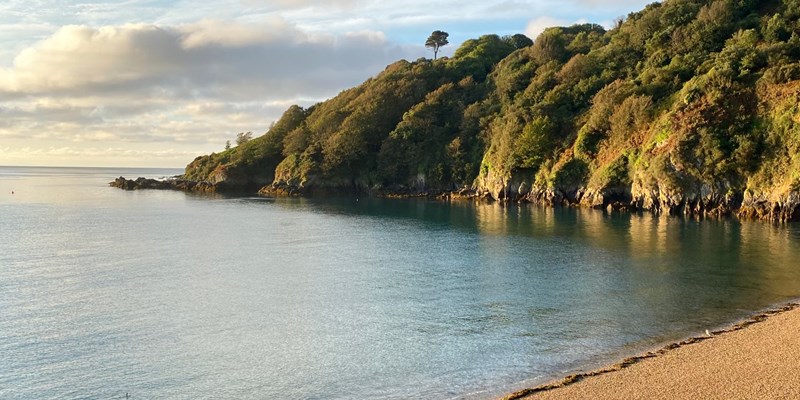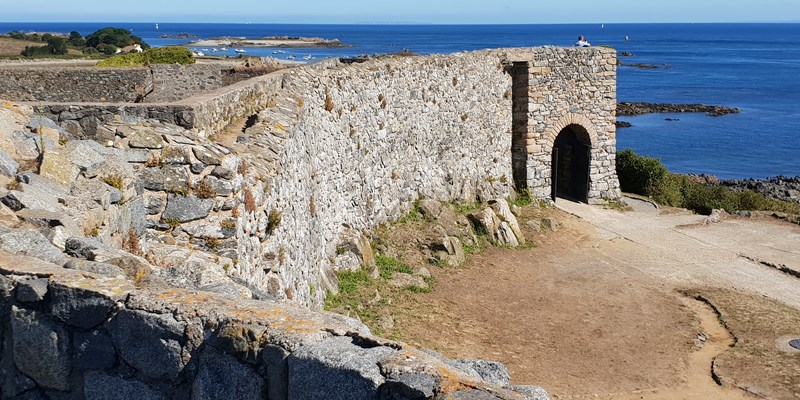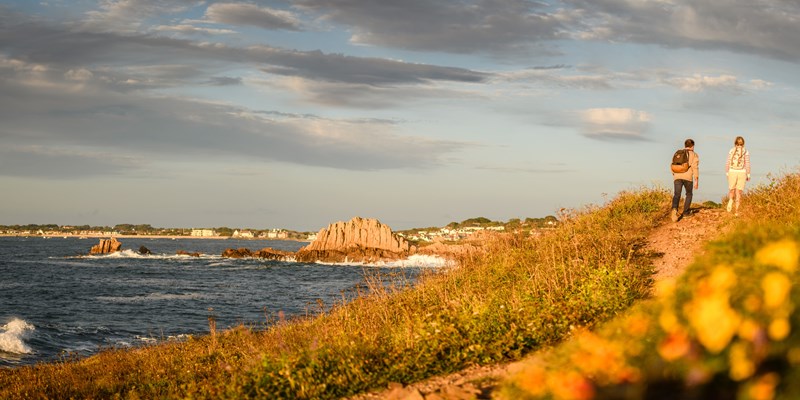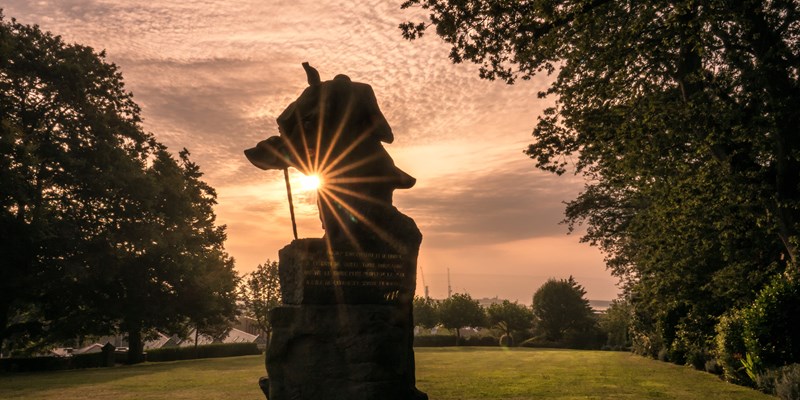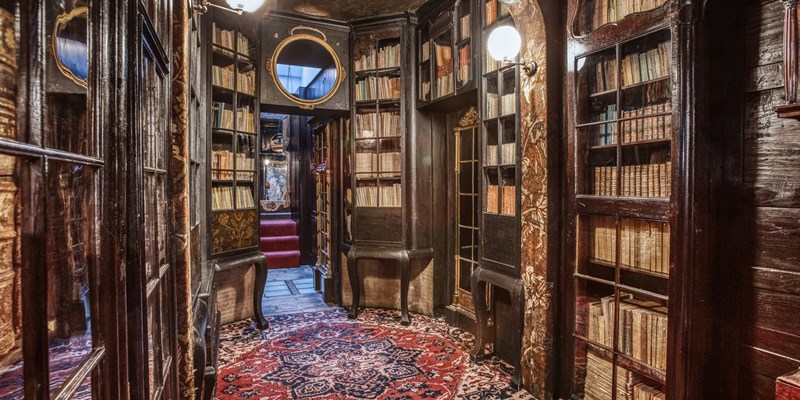World-renowned author, poet, playwright and political activist Victor Hugo came to live on Guernsey whilst in exile from his native France. He settled in St Peter Port on 31st October 1855, where he remained for 15 years, until his departure back to France in 1870.
Hugo had already spent 4 years in exile when he landed on Guernsey and was ready to find somewhere to call a more permanent home. Whilst here, the author fell in love with the Island and its people, calling it ‘the rock of hospitality and freedom’.
This video created by The Victor Hugo in Guernsey Society with support from the Guernsey Arts Commission is a fascinating insight into Hugo's daily life in Guernsey detailing some of his favourite places to spend time and Hugo's works written during his exile. Watch it now to learn more about Victor Hugo's Guernsey.
We have listed the key spots below for you to bookmark for future trips to the Islands.
Victor Hugo's Favourite Spots in Guernsey
Town Church
The Toilers of the Sea, one of Victor Hugo’s most famous works, features a marriage scene set in Town Church. This beautiful Church overlooks the harbour and would have been one of the first sights that Hugo would have set eyes upon when he landed on Guernsey.
Hugo Bench
This bronze statue of Victor Hugo and an Octopus (the one that protagonist Gilliatt fights in The Toilers of the Sea) sitting on a bench is situated in front of town Church and was unveiled in 2021. You can sit on the bench next to Victor Hugo and look out across St Peter port Harbour, over the other Islands in the Bailiwick of Guernsey and out to France.
St Sampson’s Church
Another location mentioned in The Toilers of the Sea, Ebenezer Caudry arrives on the Island to take over as the rector of St Sampson’s. This small, pretty church is located in a lane just off The Bridge and is easily accessible to all.
Vale Castle
This castle, which overlooks the northeast end of the Island and has spectacular views of neighbouring Island Herm and Jethou, is mentioned multiple times in The Toilers of the Sea and was somewhere that Victor Hugo often visited and walked past. It is open to the public throughout the year. The history of the castle dates it back to an earthwork from the early Iron Age, but the earliest parts of the stone built castle that we see today date to the 15th century. Barracks were added in the 18th century, but several were later demolished. During the Second World War the German occupying forces fortified the castle and the surrounding area, remains of which can be seen today.
Victor Hugo’s daily routine included a swim at Havelet Bay. On October 22nd 1857, he recorded his 123rd swim at the Bay and there are important scenes from The Toilers of the Sea set at this very Bay. Havelet Bay is easily accessible by sandy beach and has two slipways, one by Castle Cornet and the other at Octopus Bar & Restaurant (currently closed for refurbishment). It overlooks the neighbouring Islands of Herm and Sark, and is the perfect point for sea swimming. And if you don’t fancy a swim, you can sit on the beach or sea wall with an ice cream and look out to sea.
Fermain Bay
Fermain Bay was one of Victor Hugo’s favourite places to sit and write poetry and bathe in the sea. The pebble bay is situated down a valley, accessible by cliff path walk, and holds one of the most beautiful tucked-away beaches and cafes on Guernsey.
Moulin Huet Bay
During his stay on the Island, Hugo and his family would often take picnics to Moulin Huet Bay. Found in the depths of St Martins with breathtaking cliff views, it is easy to see why this particular location inspired so much creativity within the writer.
Pleinmont
Hugo was a frequent visitor of the headland at Pleinmont. In The Toilers of the Sea, the haunted house is located here, and Les Hanois Lighthouse, which still exists to this day, can be seen. From these magnificent viewpoints, you can also see Lihou Island, as well as Jersey and the French coast on particularly clear days. As you walk around, you will also come across the impressive WW2 German Naval observation tower and the Fairy Ring, a ring of stones and a shallow circular trench with various tales of superstition.
Les Hanois Lighthouse
Victor Hugo was an avid political activist, campaigning for social change and the dignity of the individual whilst on the Island. He argued in favour of the building of Les Hanois Lighthouse, built in response to an increasing number of shipwrecks on the treacherous rocks off the western coast of Guernsey. Les Hanois Lighthouse was constructed between 1860 and 1862, designed by James Walker and was first lit on 8 December 1862. It is sited on the rock known as Le Biseau, or Le Bisé, which is part of Les Hanois Reef. It is viewable from the headland at Pleinmont, or you can see it up close and in person through Guernsey Rib Adventures by booking their Hanois Lighthouse Adventure.
Walks Through St Peter Port and Daily Trips around the Island
Victor Hugo would frequently walk through the streets of St Peter Port, the Island’s main town. Situated on the east coast of Guernsey, with views out to the neighbouring islands, Herm and Sark, St Peter Port is a charming town with cobbled streets, blending a rich history with excellent locally owned restaurants and shops. Hugo would also take carriage drives around the Island, exploring all that the vast Guernsey countryside had to offer. Between 1865 and 1870, he took nearly 350 carriage drives around Guernsey, exploring and finding new places to write about.
Candie Gardens
Candie Gardens is home to Hugo Gardens, a floral tribute to Victor Hugo which includes plants and flowers both from his novels and his own Garden at Hauteville. Once part of a private estate, the award-winning Victorian Candie Gardens offers spectacular views across St Peter Port harbour and the sister islands of Herm, Sark and Jethou. In the gardens, aside from the beautiful flowers, lawns and fish ponds, you will find a museum, art gallery, and a cafe housed in a Victorian bandstand.
Statue of Victor Hugo
Adjacent to the Gardens mentioned above is a statue of Victor Hugo himself, presented to the people of Guernsey by the French Government on 7th July 1914 as a thank you for the kindness and generosity that was shown to Hugo during his time in exile on the Island.
Hauteville House
At 38 Hauteville you will find the recently refurbished Hauteville House, the house that Victor Hugo called home during his time here. Thanks to the success of Les Contemplations, Hugo was able to buy this home for his family. The house was bequeathed to the City of Paris upon his death in 1885, and has been open to the general public since 1927. Hour long guided tours are bookable for you to take a walk around the rooms that were meticulously decorated by Hugo himself. The five floors each house countless stories and hidden gems, such as the Latin inscription that adorns the dining-room door: exilium vita est, ‘life is exile’. At the very top of the house is the glazed lookout where Victor Hugo stood at a podium and wrote some of his masterpieces, looking out over Sark, Herm and Little Russel.
Victor Hugo’s Garden at Hauteville House
After walking around the magnificent house, you will be able to take in the tranquil settings of Hauteville Gardens. These gardens have been faithfully renovated by the City of Paris and include a kitchen garden, fruit trees, and Hugo's United States of Europe Oak tree, a tree he planted himself whilst living on the Island. He declared by the time it had become a mature oak, we would be living in a United States of Europe. He spent a lot of time in his Garden, and his Bench of Contemplations was one of his favourite spots to sit and be alone and at peace with his thoughts.
Books Written on Guernsey
There are a number of books and major works that Victor Hugo wrote and published during his 15 years on Guernsey, taking inspiration from the sights and people on the Island.
- The Toilers of the Sea - Les Travailleurs de la Mer
Published in 1862, one of Victor Hugo’s most famous novels was written whilst he was living on Guernsey, and is set on the Island. Many Guernsey landmarks feature within the novel, including Town Church, St Sampson’s Church, Vale Castle and Pleinmont. The novel is dedicated to the people of Guernsey, the dedication from Victor Hugo reading; ‘I dedicate this novel to the island of hospitality and freedom, to this corner of old Norman land where the noble little people of the sea dwell, on the island of Guernsey, severe and sweet, my current refuge and likely tomb.’ This novel also made the Sark word for Octopus, ‘pieuvre’, famous in France and around the world. - Les Miserables
Hugo’s most famous work was completed and published during his stay on Guernsey. - The man who laughs - L’Homme qui rit
This novel was written and published during his exile. - The Legend of the Ages - La Légende des Siècles
A collection of poems written by Hugo during his time in exile, published in a series of three, the first of which was published whilst he was living on Guernsey. - Théâtre en liberté
A collection of dramatic plays written by Victor Hugo during his exile on Guernsey, published posthumously. - William Shakespeare
Written in Hugo’s 13th year of exile, this book focuses on the writers that Hugo considered genius.



